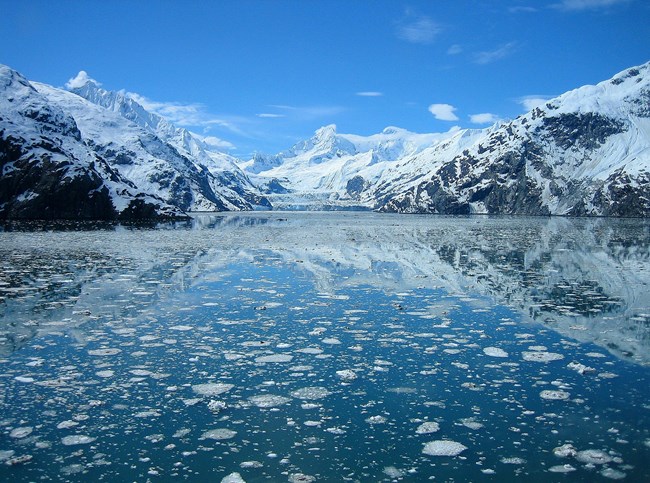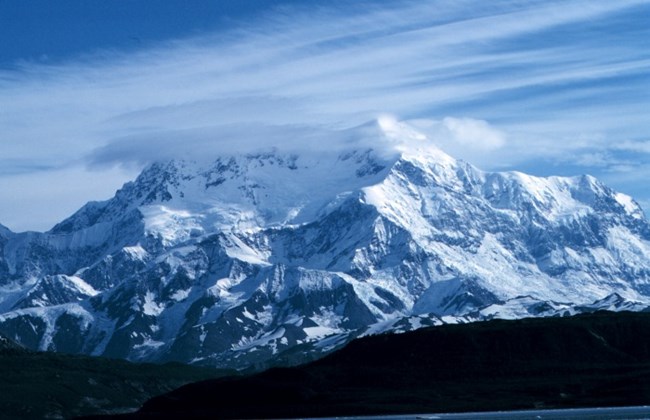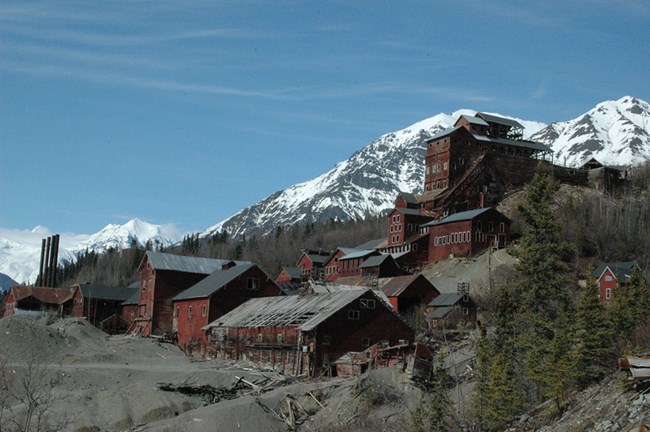Last updated: March 29, 2021
Article
Kluane / Wrangell-St. Elias / Glacier Bay / Tatshenshini-Alsek: World Heritage Site

CC0
In southeast Alaska, neighboring British Columbia, and Yukon, a massive complex of parks was inscribed together as a single joint US-Canadian World Heritage Site: the Kluane/Wrangell-St. Elias/Glacier Bay/Tatshenshini Alsek. The two US sites are both national parks: the Glacier Bay National Park and Preserve and the Wrangell-St. Elias National Park and Preserve. The complex protects over 24 million acres (nearly 10 million ha) of wild lands and waters. The wilderness of Glacier Bay offers a spectacular array of tidewater glaciers, snow-capped mountain ranges, ocean coastlines, deep fjords, and freshwater rivers and lakes. This enormous land and seascape hosts a diverse mosaic of plant communities and a wide variety of marine and terrestrial wildlife, including humpback whales, grizzly bears, wolves, caribou, and Dall sheep.
The parks that make up this World Heritage Site are still tectonically active and demonstrate some of the best examples of landscape modification by the formation and movement of glaciers and ice fields. These parks feature continuous mountain-building activity and contain outstanding examples of major geologic and glacial change. Over 200 glaciers in the ice-covered central plateau combine to form some of the world's largest and longest glaciers, several of which stretch to the sea. This trans-boundary treasure offers unexcelled opportunities to study the earth's most fundamental geologic processes and serves as a center for researchers from multiple disciplines to work together. What scientists learn here may one day foretell changes to the region and the world.
The marine wilderness offers a spectacular array of tidewater glaciers, snow-capped mountain ranges, ocean coastlines, deep fjords, and freshwater rivers and lakes. In addition, this diverse land and seascape hosts a mosaic of plant communities and a wide variety of marine and terrestrial wildlife. Here one can view some of the world’s longest and most spectacular glaciers.

CC0
Since the 1800s, scientists, gold prospectors, explorers, and government geographers have documented what they discovered in Glacier Bay. However, human activity in the region dates back far earlier, to over 9,000 years ago. When Europeans arrived at Glacier Bay in the 18th century, the Tlingit people were the dominant Native population in the region. They had occupied the Dundas Bay area for over 800 years. Tlingit guides aided John Muir when he visited Glacier Bay in 1879. Muir’s writings helped Glacier Bay become a popular tourist attraction and the focus of many scientific inquiries in the late 1880s to 1890s. Archeological evidence in Wrangell-St. Elias National Preserve near Glacier Bay's northern border indicates continuous human occupation of the area dating from the time when the Ahtna Native population settled the park’s Copper Basin, around 1,000 years ago.
Glacier Bay National Park and Preserve is a land of stunning scenery, pristine coastlines, mountains, glaciers, fjords, and even temperate rain forests. Visitors arrive either by flying in on a plane or aboard cruise ships and a variety of smaller tour vessels. The only visitor facilities in the park are located in the Bartlett Cove area including Glacier Bay Lodge, the Park Visitor Center, Visitor Information Station, exhibits, and Park Headquarters. Trails, a public dock, kayak rentals, and a walk-in campground are available to help visitors explore the wilderness. Park Rangers provide regular guided activities, and also board cruise ships and tour vessels to present information about Glacier Bay and answer questions.

Photo by Sewtex, CC BY 2.5, https://commons.wikimedia.org/w/index.php?curid=1154622
Wrangell-St. Elias National Park and Preserve is the largest national park in the U.S. at more than 13 million acres (5.2 million ha). Visitors can experience a vast scenic wilderness with looming mountains, massive glaciers, and raging ice-fed rivers. The park contains entire intact ecosystems, millennia old. Visitors may also engage in the area’s rich history at the Kennecott Mines, a National Historic Landmark listed in the National Register of Historic Places, or pass through the historic town of Chitina, which includes a post office, tire repair services, a café, and a variety of lodging options. Kennecott is considered the best remaining example of early 20th century copper mining with its historic mines and the mill town where the ore was processed. The Kennecott Mines National Historic Landmark includes the land and mining claims that formed the foundation for the Kennecott Copper Corporation, later the Kennecott Minerals Company. From 1911 to 1938, nearly $200 million worth of copper was processed.
Along with the parks in the United States, visitors can also explorethe parks in Canada that are included in the Kluane/Wrangell-St. Elias/Glacier Bay/Tatshenshini Alsek World Heritage Site World Heritage Site: Kluane National Park and Reserve and Tatshenshini-Alsek Provincial Park.
Wrangell-St. Elias Park Page: https://www.nps.gov/wrst/index.htm
Glacier Bay Park Page: https://www.nps.gov/glba/index.htm
World Heritage Sites information: https://whc.unesco.org/en/list/72/
